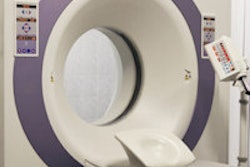Wednesday, December 3 | 11:10 a.m.-11:20 a.m. | SSK07-05 | Room E350
A group from Boston University Medical Center will discuss the benefits of using texture analysis to noninvasively evaluate hepatic fibrosis on noncontrast-enhanced CT scans.Hepatic fibrosis has significant clinical implications, including progression to cirrhosis, development of hepatic failure, portal hypertension with variceal hemorrhage, and a greatly increased risk for hepatocellular carcinoma. As a result, the ability to diagnose, grade, and monitor the progression of hepatic fibrosis is vital to prevent patient morbidity and mortality, said presenter Dr. Brian Tischler.
Percutaneus biopsy is the current gold standard for detecting hepatic fibrosis, but it's an invasive procedure that comes with limitations and potential complications such as bleeding, infection, and even death, Tischler said. To find a reliable and noninvasive means for grading hepatic fibrosis using imaging, the researchers sought to investigate the use of texture analysis of noncontrast CT studies.
"Given its significantly lower cost when compared to MRI and its wider availability, the capacity to diagnose and stage hepatic fibrosis using texture analysis of CT images would be clinically valuable," Tischler told AuntMinnie.com. "Furthermore, noncontrast CT has the added benefit of being an imaging modality with several advantages when compared to some other imaging options, as it has no contraindications and thus can be performed on nearly any patient regardless of their renal function, allergies, or internal ferromagnetic materials."
Using an internally developed MatLab texture analysis program, the researchers found that the technique could accurately distinguish low levels of hepatic fibrosis from higher levels. It "is therefore a potential image-based noninvasive alternative to liver biopsy for evaluating hepatic fibrosis," Tischler said.




















